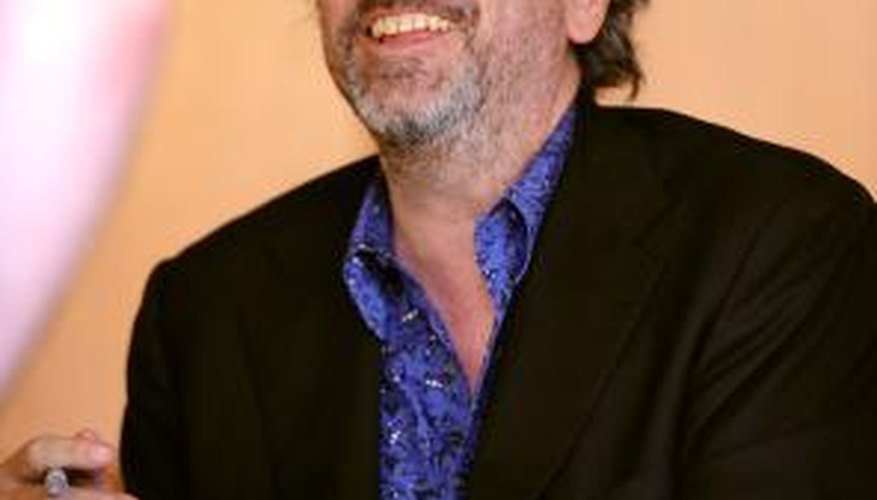Tim Burton is a master of the dark and nightmarish corners that lurk within the human mind. His films such as "Edward Scissorhands," "Big Fish, "The Nightmare Before Christmas" and "Sleepy Hollow" all show a fondness for the unusual and surreal stories that can be told through film. Burton has several techniques that have become types of signatures in his filmmaking, making the visual style of most Burton films instantly recognisable.
Stop-Motion
One technique that is perhaps more identified with Burton than anything else is that of stop-motion animation. Although Burton has only used this technique in a few of his films, the iconic "The Nightmare Before Christmas" has made this technique forever associated with Burton. Follow-up efforts like "Corpse Bride" were also very well-received. Stop-motion involves using physical sets and puppets and shooting each subsequent frame of the film as the puppets are moved through the motions you end up seeing on film.
- One technique that is perhaps more identified with Burton than anything else is that of stop-motion animation.
Dutch Angle
The dutch angle or dutch tilt is a film technique that appears in many of Burton's films. While certainly not unique to the director, he employs the technique much more frequently than more conventional filmmakers. The shot involves tilting the camera when shooting a frame in order to create a skewed sense of tension. In the resultant shot, the horizon of the shot will be on an angle rather than on a horizontal plane. He uses the technique in both his live-action and stop-motion camerawork.
- The dutch angle or dutch tilt is a film technique that appears in many of Burton's films.
- The shot involves tilting the camera when shooting a frame in order to create a skewed sense of tension.
Point-of-View Shots
Burton enjoys employing point-of-view shots quite often in his films. This technique is demonstrated most clearly in one of his breakout early successes, "Edward Scissorhands" starring Johnny Depp. This film has several shots where the camera is clearly seeing something from the point of view of a specific character, rather than serving as an outside eye looking in.
Colour
Colour is a large part of Burton's camera mastery. He shoots subjects in oversaturated and undersaturated colour, often in order to use the colour of the scene to help add to the Gothic mystery or surreal and dreamlike states that his stories frequently find themselves in. Although digital colour grading assists in the process of achieving vibrant and specific colouring in his pictures, such as in "Charlie and the Chocolate Factory," Burton is still known for using the camera to capture colour unlike that which most other directors put on the screen.
